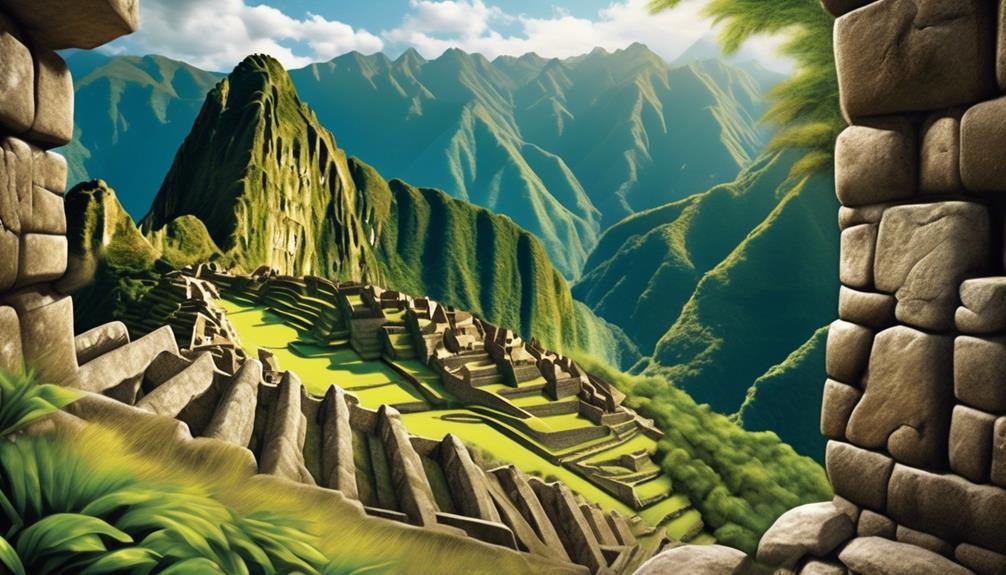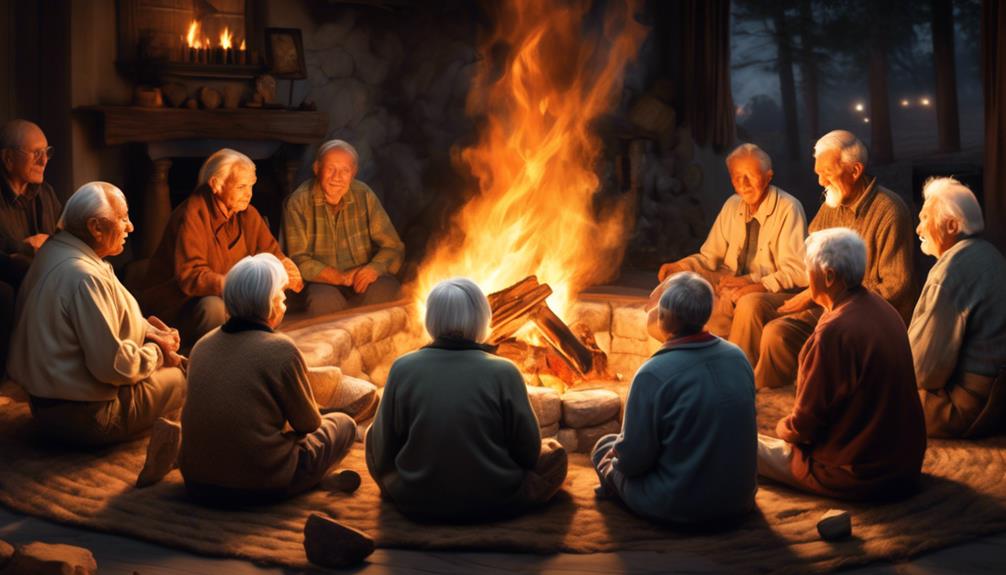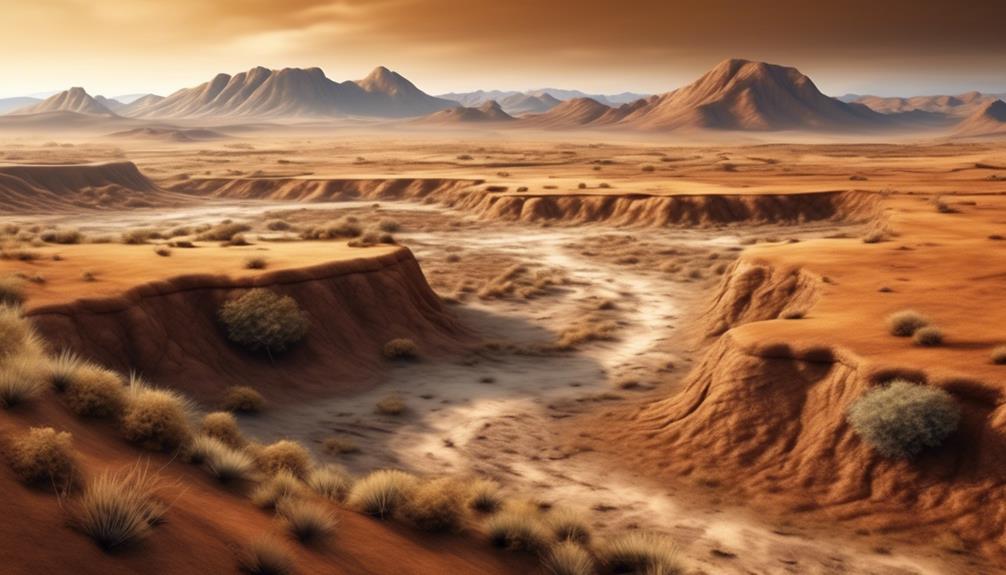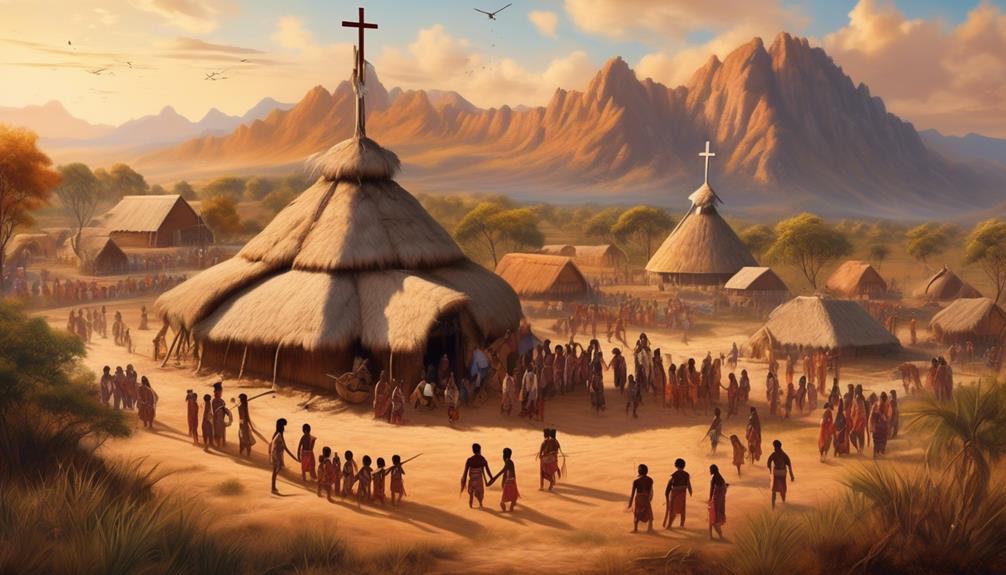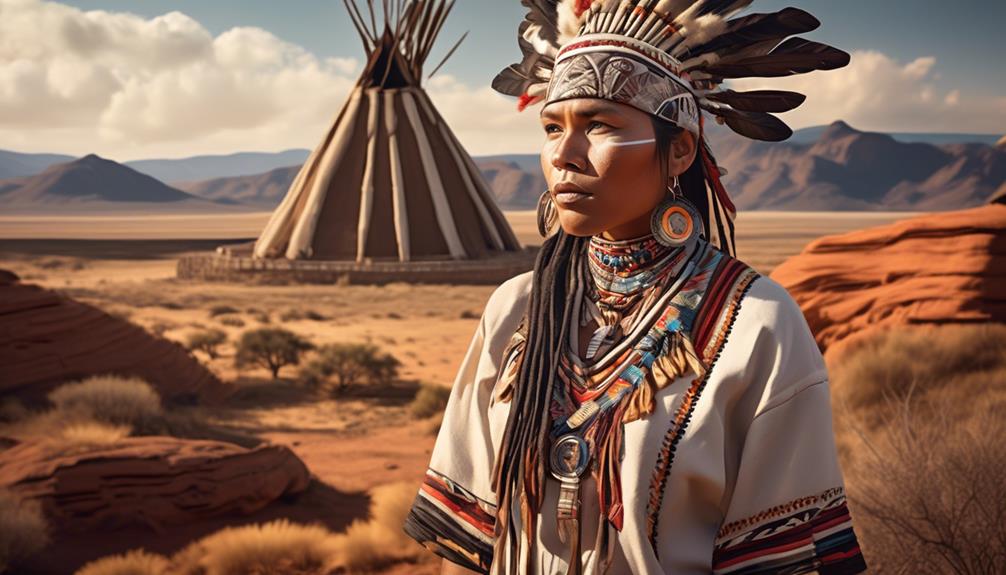As we explore the historical fabric of Peru, it is truly astonishing to witness the diverse indigenous populations that once lived in this region throughout time.
From the enigmatic Chavín culture to the mighty Inca Empire, Peru is a treasure trove of ancient civilizations that have left an indelible mark on the country's landscape and culture.
But what were the unique characteristics and contributions of these ancient indigenous groups?
Let's embark on a journey through time to uncover the fascinating stories of the people who shaped Peru's history.
Key Takeaways
- The Chavín culture flourished in Peru from around 900 BCE to 200 BCE and had advanced engineering skills, with the most iconic structure being Chavín de Huántar.
- The Moche civilization thrived in coastal regions of Peru from around 100 CE to 800 CE and were known for their advanced irrigation systems and intricate metalwork.
- The Nazca society is famous for its enigmatic geoglyphs, including the renowned Nazca Lines, and had advanced agricultural practices and exquisite ceramics depicting daily life and religious beliefs.
- The Inca Empire had a vast territorial expanse and sophisticated administrative systems, with remarkable achievements in architecture, society, and culture, including the majestic stone structures of Machu Picchu.
Chavín Culture
The Chavín Culture, characterized by its intricate religious practices and sophisticated artistry, flourished in the Andean region of Peru from around 900 BCE to 200 BCE.
Chavín architecture is a testament to the advanced engineering skills of this ancient civilization. The most iconic structure is the Chavín de Huántar, a complex of stone buildings with a series of underground galleries and chambers. The careful construction and use of ventilation shafts within the temple complex suggest a deep understanding of architectural principles and a mastery of building techniques that allowed for the creation of spaces suitable for religious rituals and ceremonies.
Chavín religious practices were deeply intertwined with their architecture and art. The Chavín deities, often depicted as anthropomorphic figures with zoomorphic features, were central to their belief system. The art and architecture of the Chavín reflect a complex cosmology and belief in the supernatural, with the structures serving as physical manifestations of their spiritual beliefs. The careful placement of carvings and sculptures within the temple complex indicates a deliberate and purposeful design to evoke specific religious experiences.
The Chavín Culture's architectural and religious achievements continue to fascinate scholars and enthusiasts, offering valuable insights into the sophisticated and spiritually rich world of ancient Andean civilizations.
Moche Civilization
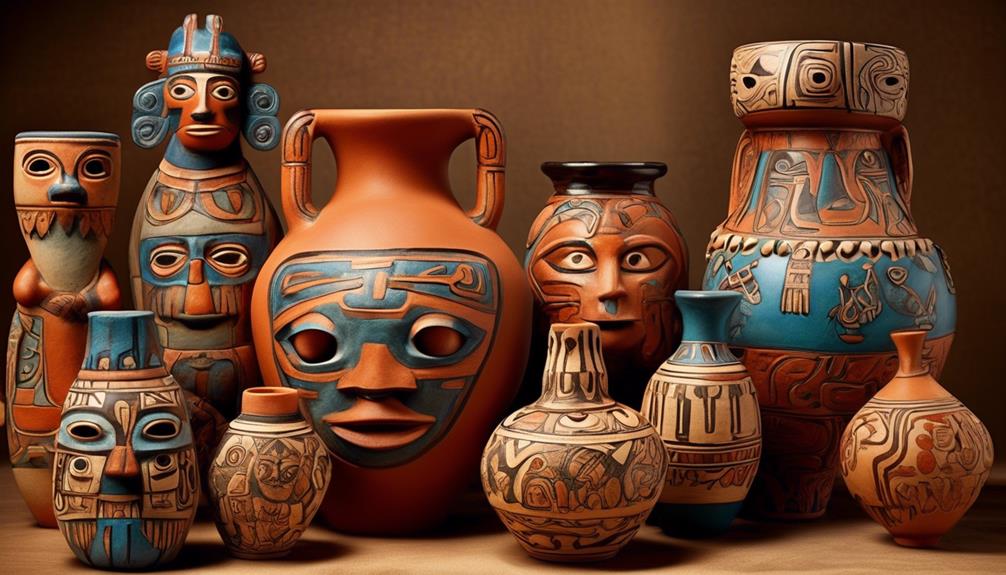
Flourishing in the coastal regions of present-day Peru from around 100 CE to 800 CE, the Moche Civilization is renowned for its advanced irrigation systems and intricate metalwork. The Moche people were exceptional artisans, and their artwork provides a window into their culture and beliefs.
The pottery of the Moche is particularly striking, depicting scenes of everyday life, ritualistic practices, and mythical creatures. The intricate designs and attention to detail in their ceramics evoke a sense of wonder and admiration for their artistic prowess.
Moreover, the architectural achievements of the Moche, such as the monumental structures at the site of Huacas del Sol and Huacas de la Luna, showcase their engineering ingenuity and organizational skills. These monumental adobe structures, adorned with vibrant murals, offer insight into the Moche's societal structure and religious practices, leaving us in awe of their architectural accomplishments.
Studying Moche artwork and architecture allows us to delve into the complexities of this ancient civilization, providing a glimpse into their daily lives and spiritual beliefs.
Nazca Society
With the Moche civilization's intricate pottery and monumental adobe structures as a testament to their artistic and engineering capabilities, the Nazca Society emerged as a distinct ancient indigenous people in Peru, known for their enigmatic geoglyphs etched into the desert plains. The Nazca people are famed for their Nazca geoglyphs, colossal designs created on the arid Nazca Plain. These geoglyphs, including the renowned Nazca Lines, depict various creatures, plants, and geometric shapes, sparking scholarly debates about their purpose and the techniques used to create them.
In addition to their impressive geoglyphs, the Nazca Society was characterized by advanced agricultural practices. The construction of underground aqueducts, known as puquios, enabled the Nazca to efficiently manage water resources in their desert environment, fostering agricultural productivity. This innovative approach to water management allowed the Nazca to thrive in an otherwise challenging landscape.
Furthermore, the Nazca are celebrated for their exquisite ceramics, showcasing sophisticated artistic techniques. Their pottery features intricate designs and vibrant colors, reflecting the Nazca people's skill and creativity. The ceramics offer valuable insights into Nazca society, depicting aspects of daily life, mythology, and religious beliefs. The Nazca Society's artistic achievements and ingenuity continue to captivate and inspire admiration in the modern world.
Inca Empire
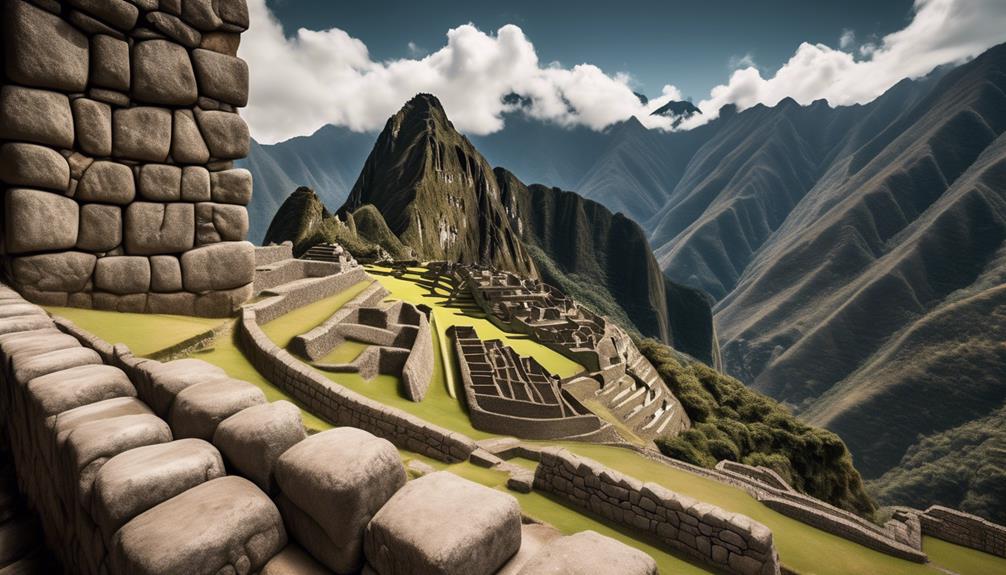
A defining feature of Peru's ancient indigenous history, the Inca Empire, with its vast territorial expanse and sophisticated administrative systems, left an indelible mark on the region. The Inca civilization, nestled in the Andes Mountains, thrived from the early 15th century until the arrival of the Spanish conquistadors in 1533. The Inca are renowned for their remarkable achievements in architecture, society, and culture, which continue to captivate the imagination of modern-day historians and archaeologists.
The Inca Empire: A Testament to Human Ingenuity
- Majestic Architecture: The awe-inspiring stone structures of Machu Picchu and the intricately constructed terraces of Moray stand as a testament to the Inca's architectural prowess, showcasing their advanced understanding of engineering and aesthetics.
- Harmonious Society: The Inca society was structured around a complex system of governance, economy, and religion, promoting unity and cooperation among its people. The elaborate network of roads and bridges facilitated communication and trade across diverse landscapes, fostering a sense of interconnectedness.
- Rich Cultural Legacy: From their intricate textiles and ceramics to their sophisticated agricultural techniques, the Inca's cultural legacy reflects a deep reverence for the natural world and a profound understanding of sustainability.
The Inca Empire's enduring legacy serves as a testament to the remarkable achievements of ancient indigenous civilizations in Peru.
Other Ancient Indigenous Groups
The legacy of the Inca Empire provides a compelling backdrop for exploring the diverse array of other ancient indigenous groups that flourished in Peru prior to the Spanish conquest. These groups exhibited remarkable cultural and geographical diversity, reflecting the rich tapestry of ancient Peru. Here, we delve into the fascinating world of Amazonian tribes with their unparalleled cultural diversity and the indigenous communities of the Andean highlands, known for their advanced agricultural practices.
| Amazonian Tribes | Andean Highlands |
|---|---|
| Culturally diverse with unique languages, traditions, and belief systems | Mastered terraced farming techniques to cultivate potatoes, quinoa, and maize |
| Thrived in the dense rainforests, relying on hunting, fishing, and foraging | Engaged in complex irrigation systems to support their agricultural endeavors |
| Known for their intricate knowledge of medicinal plants and shamanic practices | Developed a sophisticated understanding of alpaca and llama domestication |
The Amazonian tribes, thriving in the lush rainforests, showcased an incredible array of cultural practices and languages, while the indigenous groups of the Andean highlands exhibited remarkable agricultural expertise, shaping the landscape to sustain their communities. These diverse ancient indigenous groups collectively contributed to the rich tapestry of pre-Columbian Peru.
Frequently Asked Questions
What Were the Major Trade Routes of the Chavín Culture and How Did They Impact Their Society?
Trade routes were crucial for the Chavín culture, facilitating cultural exchange and economic development. They linked the highlands and coastal regions, enabling the exchange of goods, ideas, and technologies.
This interaction fostered the spread of Chavín art and religious practices, impacting their society profoundly. The trade routes promoted social cohesion and political influence, contributing to the establishment of Chavín as a dominant and influential culture in ancient Peru.
How Did the Moche Civilization Influence the Religious Beliefs of Other Ancient Indigenous Groups in Peru?
Influence, religious beliefs – the Moche civilization significantly impacted other ancient indigenous groups in Peru.
Their intricate art and complex religious rituals influenced neighboring societies, shaping their spiritual beliefs and practices.
The Moche's rich iconography and elaborate ceremonies left a lasting imprint on the religious landscape of the region.
Through trade and cultural exchange, their religious ideologies spread, influencing and intertwining with those of other indigenous groups in Peru.
What Were the Main Agricultural Practices of the Nazca Society and How Did They Sustain Their Population in the Desert Environment?
We discovered that the Nazca society implemented innovative agricultural practices to sustain their population in the desert environment. They utilized sophisticated irrigation systems and cultivated crops such as maize, beans, and squash. This enabled them to thrive in an otherwise challenging landscape.
The success of their agricultural techniques also facilitated trade along the Chavín trade routes and had a significant impact on Nazca societal development.
How Did the Inca Empire Incorporate the Traditions and Beliefs of the Previous Ancient Indigenous Groups Into Their Own Culture?
Incorporating the traditions and beliefs of previous ancient indigenous groups into their own culture, the Inca Empire displayed a remarkable ability to blend and integrate diverse cultural practices.
The Inca culture was influenced by the rich and varied traditions of the societies that preceded them, incorporating elements of art, religion, and social organization.
This incorporation of traditions and beliefs played a pivotal role in shaping the unique and complex cultural identity of the Inca Empire.
What Were the Key Differences in the Social Structures of the Other Ancient Indigenous Groups in Peru Compared to the Inca Empire?
When comparing the social hierarchies and political systems of the other ancient indigenous groups in Peru to the Inca Empire, we find notable differences. The diverse indigenous societies in Peru showcased a wide range of social structures and political organizations, varying from decentralized chiefdoms to complex state formations.
These differences not only highlight the rich tapestry of ancient Peruvian cultures but also provide insights into the dynamic evolution of societal structures in the region.
Conclusion
In conclusion, the diverse ancient indigenous people who lived in Peru have left a lasting impact on the history and culture of the region.
Their impressive architectural feats, intricate artwork, and advanced agricultural practices continue to inspire awe and admiration.
While their societies may no longer exist in the same form, their legacy lives on through the artifacts and traditions they've passed down, enriching the world with their wisdom and creativity.
Mary is a passionate writer who brings creativity and a fresh perspective to our team. Her words have the power to captivate and inspire, making her an essential contributor to our content. Mary’s commitment to storytelling and dedication to promoting Indigenous culture ensures that her work touches the hearts of our readers. We’re fortunate to have her as part of our team.
